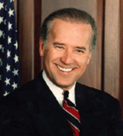United States Senate election in Oregon, 1972
United States Senate elections, 1972

|
|
|
34 of the 100 seats in the United States Senate
51 seats needed for a majority
|
|
|

Results, with special elections
Democratic gain Democratic hold
Republican gain Republican hold
|
|
U.S. Senate election in Delaware, 1972

|
|
|
|
|

County results
|
|
U.S. Senate election in Illinois, 1972

|
|
|
|
|
|
U.S. Senate election in Maine, 1972

|
|
|
|
|
|
U.S. Senate election in Massachusetts, 1972

|
|
|
|
|

Results by town. Red indicates towns carried by Edward Brooke, blue indicates towns carried by John J. Droney.
|
|
U.S. Senate election in Montana, 1972

|
|
|
|
|
|
U.S. Senate election in Nebraska, 1972

|
|
|
|
|
|
U.S. Senate special election in Vermont, 1972

|
| ← 1970
|
January 7, 1972 (1972-01-07) |
1976 → |
|
|
|
|
Mike Mansfield
Democratic
Mike Mansfield
Democratic
The 1972 United States Senate elections coincided with the landslide re-election of Republican President Richard Nixon. Despite Nixon's victory, Democrats increased their majority by two seats. After the elections, Democrats held 56 seats and Republicans held 42 seats, with 1 Conservative and 1 independent Senator. These were the first elections that citizens at least 18 years of age (instead of 21 and older) could vote due to the 1971 passage of the 26th Amendment.
Source: Clerk of the U.S. House of Representatives (1973). "Statistics of the Presidential and Congressional Election of November 7, 1972" (PDF). U.S. Government Printing Office.
Democratic pickups included open seats in Kentucky and South Dakota, and defeats of Senators Gordon L. Allott of Colorado, J. Caleb Boggs of Delaware, Jack Miller of Iowa, and Margaret Chase Smith of Maine.
...
Wikipedia
















